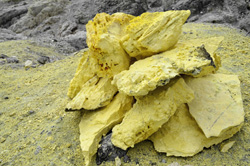Sulphur flow in the natural environment
The Sulfutopes project focused on detecting four isotopes of sulphur in natural aquatic and sedimentary systems. Scientists investigated sediment samples and tidal flat sulphide-rich water pool samples from the Wadden Sea, situated off the Dutch coast. Sulphur isotope composition was also conducted on samples from Yellowstone National Park hydrothermal springs and the Delaware Great Marsh groundwater. New analytical techniques based on mass spectrometry enabled researchers to use both conventional and rare sulphur isotopes in their investigation into the natural sulphur cycle. The aim was to differentiate between natural systems where hydrogen sulphide was produced from sulphate and those systems where sulphur was reduced and oxidised in a process known as disproportionation. Scientists also distinguished between systems where sulphur compounds were produced by oxidation of hydrogen sulphides and systems that involved a mineral or biological component. This was especially relevant to dissolved (polysulfidic) and non-soluble (elemental) zero-valent sulphur. High concentrations of hydrogen cyanide and thiocyanate were unexpectedly detected in the groundwater from the Delaware Great Marsh. Additional research showed that the cyanide was produced by the roots of cord grass (Spartina alterniflora). The main sinks of free hydrogen cyanide were found to be complexes with Fe (II), adsorption on sediment and reaction with certain sulphur species. The reaction results in formation of thiocyanate, which is less toxic than hydrogen cyanide. Data from sediment and water samples taken from the Wadden Sea, Yellowstone and the Delaware Great Marsh enabled researchers to recreate the flow of sulphur through complex biogeochemical systems. This information provided scientists with a greater understanding of the importance of sulphur in the natural environment and to life itself.







